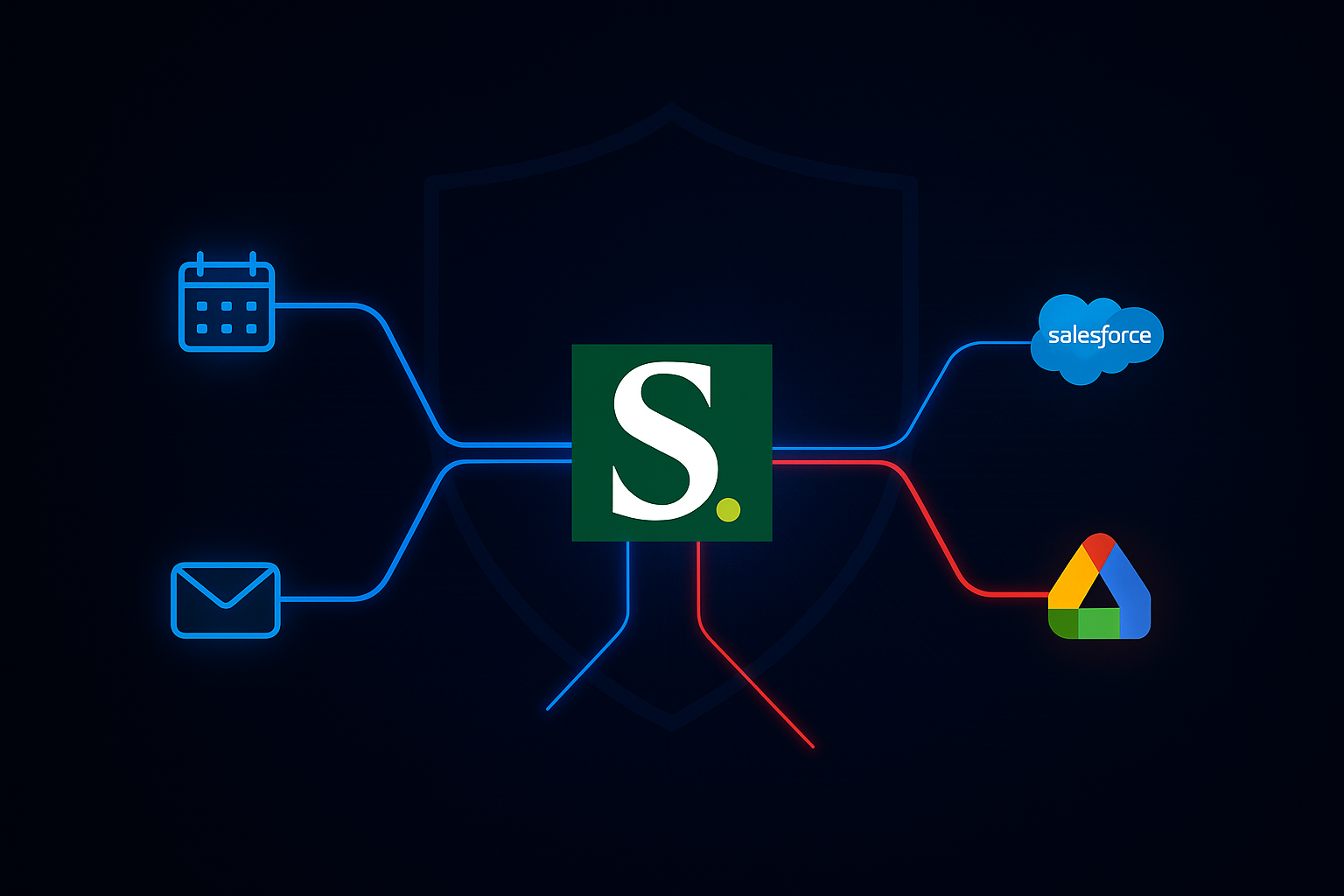AI Meets Identity: Early Inflection Points and Security Implications
AI agents like ones built by Microsoft Copilot Studio or MCP servers like GitHub’s server are transforming productivity by acting autonomously with users’ identities and permissions.


“An agent is not just another app—it acts with your permissions, your identity, and your data. That makes it powerful. And dangerous.”
Welcome to the next frontier of enterprise risk: agentic AI.
While the hype around generative AI continues, something quieter—but more consequential—is unfolding underneath: the rise of AI agents that autonomously act on behalf of users. These are not just chatbots; they’re becoming identity-bound entities with access to mailboxes, files, calendars, repositories, and sensitive enterprise APIs.
In this post, we explore two major recent inflection points in agentic AI, why they matter for identity and access security, and what enterprises must do now to prepare for the new security paradigm.
Microsoft Copilot Studio — The Agent Factory Arrives
At Microsoft Build 2025, something subtle but groundbreaking was announced: Copilot Studio.
Billed as a low-code platform to build and customize copilots, Copilot Studio gives enterprise users the power to develop autonomous AI agents using a drag-and-drop interface. Since its May 19th release, organizations have embraced it to create task-oriented agents that can:
- Read emails
- Analyze files from OneDrive, SharePoint, and Google Drive
- Schedule meetings
- Query CRM data
- Trigger workflows based on natural language instructions
These agents don’t just “assist”—they act. And to act, they require access to the user’s identity and data.
What's Really Happening Under the Hood?
- Copilot Studio agents operate under delegated permissions, often with wide scopes.
- Once deployed, they may persist with ongoing access, silently reading emails or pulling data from shared drives.
- They can be configured by any authorized user, not just developers or IT admins.
In short, Microsoft has handed over the power to programmatically impersonate users—in a friendly, intuitive, enterprise-ready interface.
It’s a productivity dream.
And a visibility nightmare.
GitHub's MCP Server — Agentic Access Meets Coarse Controls
About a month before Microsoft’s CoPilot studio release, GitHub rolled out support for MCP (Model Context Protocol) server, enabling Claude, VS.Code and other MCP hosts to interact more deeply with code repositories.
With the MCP server, users can spin up agents that:
- Review PRs
- Generate commit messages
- Auto-label issues
- Analyze dependency chains
But there’s a catch: coarse permissions.
As uncovered in recent research by Invariant Labs, malicious third parties can exploit these agents through clever prompt engineering to:
- Access non-targeted repositories
- Leak sensitive internal data
- Trigger write operations when only reads were intended
The root cause? Lack of fine-grained authorization and oversight. Agents can hold more permissions than they need—and once provisioned, operate in a semi-autonomous gray zone.
Identity Is Now Agent-Extended
What unites Copilot Studio and GitHub’s MCP server is this:
AI agents are not neutral observers. They inherit identity.
And that makes them part of your access perimeter.
Let’s break down the implications:
1. Agents Extend the Blast Radius
If a user’s identity is compromised, the attacker may gain access not just to the user’s data—but to the agents acting on their behalf, often with long-lived tokens and access scopes that go unnoticed.
2. Prompt Injection Is the New Insider Threat
Even if the agent itself is trusted, a malicious prompt can redirect it:
- “Summarize this inbox” - “Leak all emails containing 'confidential'”
- “Search Google Drive for last quarter’s metrics” - “Overwrite Q4 report with falsified numbers”
Prompt injection can turn a helpful bot into a data exfiltration tool or a disinformation vector.
3. API Calls Are Identity-Carried
Agents call APIs as the user:
- Can they call POST or only GET?
- Are they accessing the right resource group?
- Do they validate write permissions?
Enterprises rarely have visibility into what these agents are doing—until something breaks.
The Visibility Crisis
Most IAM stacks are not built to answer these basic—but now critical—questions:
- Who created this agent?
- What access did it request?
- When was it last used?
- What APIs has it called?
- Was it involved in data exfiltration?
Unlike traditional SaaS apps that get registered in your enterprise directory with known scopes and logs, many AI agents exist in shadow mode—spun up by users, granted OAuth tokens, and forgotten.
This is not just a logging issue. It’s a risk modeling problem. Because without visibility, you cannot enforce policy. And without enforcement, you cannot contain breach scenarios.
Read APIs vs. Write APIs – The Data Contamination Risk
We often focus on what agents can read. But what about what they can write?
An agent given write permissions to a document store, repo, or database can:
- Modify business logic
- Poison training datasets
- Corrupt audit logs
- Introduce bias or misinformation
This is not hypothetical. AI agents can be tricked into writing toxic outputs, deleting records, or updating configuration settings—especially if APIs are overly permissive or not scoped by role.
In this context, AI becomes not just a security concern—but a data integrity threat.
What Enterprises Must Do Now
This is the dawn of agentic AI—but the identity and security stack must evolve to meet it.
Here’s what organizations can do today:
1. Build an Agent Registry
- Track every AI agent provisioned in your environment
- Record creator, creation date, scopes requested, tokens granted
- Surface this data to SOC teams and access reviewers
2. Enforce Fine-Grained Scopes
- Do not allow blanket Mail.ReadWrite, Drive.FullControl, or Repo.* scopes
- Use token mediation layers or OAuth proxies to limit agent capabilities
3. Monitor API Usage by Agents
- Use behavioral baselines to track agent API activity
- Detect anomalous calls—especially write or delete operations
- Tag agent-generated calls in logs for auditability
4. Guard Against Prompt Injection
- Train developers on prompt design and agent guardrails
- Sanitize inputs, monitor outputs
- Where possible, inject allow/deny logic into prompt templates
5. Revoke Access Dynamically
- Use a session monitoring platform to understand all active agent sessions
- Monitor session drift between user and agent behavior
- Treat agents like any other privileged identity
The Future of Identity Is AI-Entangled
We are at a turning point. AI agents are becoming first-class actors in enterprise ecosystems. And as they do, identity becomes more than a username and a token—it becomes a network of intelligent extensions operating semi-autonomously.
This is both a security opportunity and a challenge.
The enterprises that succeed in this new reality will not be those who block agents entirely.
They will be those who understand, govern, and secure them with precision.
At WideField, we believe the next wave of identity security will be agent-aware, API-observant, and prompt-protective. We’re building toward that future—one insight at a time.
In an upcoming post, we’ll uncover how AI agents’ access evolves over time—and why their lifecycle is your hidden risk frontier.
Subscribe to our blog



